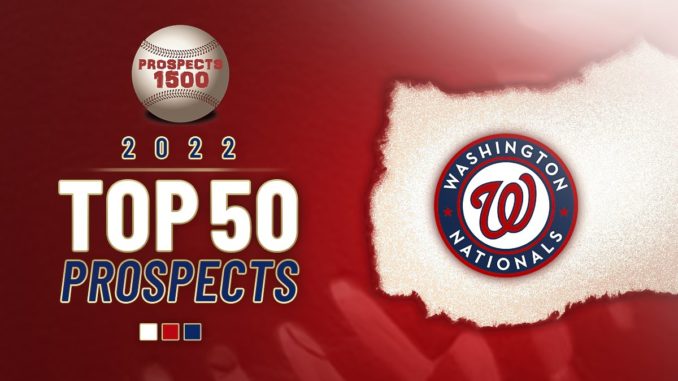
The Washington Nationals are heading into 2022 in full rebuild mode. At the trade deadline in 2021, veteran players such as Kyle Schwarber, Trea Turner, and Max Scherzer were shipped out for prospects. Before the trades, the Nationals farm system was one of the lowest-ranked in the MLB. The new additions have certainly improved the overall quality of the farm teams, but it still isn’t as robust as others.
Despite how thin the system may be, there are certainly quality prospects to be found. Brady House, falling to the Nationals in the 2021 draft was a gift. Acquiring Keibert Ruiz at the trade deadline netted them their catcher of the future. Both Cade Cavalli and Andry Lara showed the ability to be front-line starters. And while some players like Yasel Antuna and Jeremy De La Rosa struggled, they are still young enough to bounce back next year.
The 2022 season will be a big year for the Nationals system. Some players will have to bounce back, others will need to continue rising and get close to the big leagues. Recent draftees will likely get their first full season of pro ball. It may take a few seasons for it to pay off, but the Nationals have taken the important first steps in rebuilding their team.
Editor note: Colin’s Nats Top 50 was ranked and written just prior to the international signing period on January 15th. Their top signing, OF Cristian Vaquero, is not on this list now, but Colin would slot him around #14. He’s considered by some to be one of the best prospects in this international class.
Here is the Prospects1500 tier system explained.
Prospects1500 Tiers:
Tier 1: Players with high expectations of both making the majors and playing at an All-Star level for a number of years
Tier 2: Players with an above-average expectation of making the majors and being a solid contributor
Tier 3: Players with an average expectation of making the majors and being a solid contributor
Tier 4: Players who have the potential of making the majors, or have a high likelihood of making the majors but providing minimal impact
Tier 5: Players of interest, worth keeping an eye on, who have an outside chance of making their team’s 40-man roster
Levels listed for each player are the highest levels player reached in 2021
Tier 1
1. Keibert Ruiz, C, 23, MLB
Ruiz was the centerpiece of the Scherzer-Turner trade after hitting .311/.381/.631 with 16 home runs in AAA and was called up to the Nationals MLB team on August 30th. He makes plenty of contact (9% K% in the minor leagues) and has a solid approach (7% BB%). Ruiz doesn’t have plus raw power, but he makes so much contact overall he should have no issue reaching 20 home runs at peak with a high average. He and Juan Soto should both be anchors in the Nationals lineup for years.
🚨 KEIBERT RUIZ! 🚨
🚨 BASES-LOADED! 🚨
🚨 THREE-RUN! 🚨
🚨 GO-AHEAD! 🚨
🚨 DOUBLE! 🚨#NATITUDE pic.twitter.com/PgeBtT8eJg— Washington Nationals (@Nationals) September 12, 2021
2. Cade Cavalli, RHP, 23, AAA
Cavalli was absolutely dominant in 2021, leading all of the minor leagues in strikeouts with 175. The 6’4′, 230-pound beast has a four-pitch mix that features an electric fastball that has hit 100 mph. The arsenal features 2 power-breaking balls and a changeup. Cavalli does need to improve the command before being called up. In 6 games at AAA, he was tagged with a 7.30 ERA and the strikeouts decreased. Despite the hiccups, he’s a top of the rotation arm who has a chance to debut with Washington this year.
Cade Cavalli was our 1st round pick in 2020.
Yesterday at the @MLB Futures Game, he featured a 100 mph fastball…
…AND a devastating changeup.@CADECAVALLI 💈 // #NATITUDE pic.twitter.com/rFUzWYebhH
— Washington Nationals (@Nationals) July 12, 2021
Tier 2
3. Brady House, SS, 18, FCL (Rookie)
House was drafted 11th overall in the 2021 draft, which was an absolute steal for Washington. House is a big boy, already 6’4″, 215 pounds. He has lightning-quick bat speed and plus-plus power. In only 16 games at the FCL, he hit four home runs with a .970 OPS. The profile may have some swing and miss to it, but House has been able to succeed so far. He’s a future middle-of-the-order bat who’s athletic enough to stick at short.
Brady House – 18 – homered.
Again.@Brady_house7 // #NATITUDE pic.twitter.com/vCYVcEFuDC
— Washington Nationals (@Nationals) August 31, 2021
4. Cole Henry, RHP, 22, High-A
Henry is a power pitcher, having 2 fastballs that run up to the mid-90s plus a good changeup. He struck out 38% of the hitters in High-A and kept the walks at a reasonable 7%. Henry also throws a good changeup and his curveball has improved and could be a double plus pitch. He’s a bulldog on the mound who attacks hitters and isn’t afraid to throw strikes. There is some reliever risk with Henry, but if his secondaries continue to improve he’s going to be a solid starting pitcher.
Cole Henry and his mustache struck out 9 batters in 5 innings last night.
They have a 0.41 ERA and 31 Ks over their last 22 IP.@Cole__Henry12 // #NATITUDE pic.twitter.com/APWdUswInN
— Washington Nationals (@Nationals) September 18, 2021
5. Andry Lara, RHP, 18, Low-A
Lara is another arm that could move fast. His fastball hits the upper 90s, has a plus breaking ball and a changeup that should be useful. His 6’4″ frame and athletic, repeatable delivery are solid building blocks for the young pitcher. Lara is still very raw and needs to work on his command and avoiding the home run ball. In 48.1 innings, he walked 21 batters and gave up 7 home runs, but also struck out 25% of the batters he faced. If he can put it all together, Lara has front of the rotation potential.
Andry Lara got back on track in 2021.
He’s one of the top prospects in the Nationals farm system.
New scouting report: https://t.co/HBPkSayZuS pic.twitter.com/waVfLO9QaJ
— Baseball America (@BaseballAmerica) October 29, 2021
6. Jackson Rutledge, RHP, 22, Low-A
Rutledge arguably has some of the best stuff in the system despite struggling in 2021 with command and health. The fastball is easily plus-plus and his slider is above average. His underlying numbers suggest he pitched better than his 7.68 ERA would suggest. Staying healthy and improving the rest of his arsenal in 2022 will quiet any reliever concerns. Even if he fails to stick in the rotation, Rutledge could make an elite reliever.
Third-ranked @Nationals prospect Jackson Rutledge fanned 7 over 3 1/3 innings with a fastball that sat at 95 and topped out at 98.
Watch live: https://t.co/GsMg4iBVK9 pic.twitter.com/gZtxpTVnv7
— MLB Pipeline (@MLBPipeline) November 21, 2021
7. Jeremy De La Rosa, OF, 19, Low-A
Washington has been very aggressive with De La Rosa’s assignments, having placed him in Low-A at only 19 years old. Despite the poor results in 2021 (.595 OPS and 34% K%), De La Rosa remains one of the most tooled-up players in the minors. The foundation for a good hit tool is present. De La Rosa can hit to all fields and has been able to avoid chasing breaking pitches. The raw power is there and will turn to game power and he matures and adds muscle. A very exciting young bat.
Want to see Jeremy De La Rosa hit a ball really far?
His second homer of the season last night put the FredNats up 2-1 in the fifth. pic.twitter.com/gHqLteeVJB
— Fredericksburg Nationals (@FXBGNats) June 16, 2021
8. Yasel Antuna, SS, 22, High-A
Antuna made a swing change in the middle of the season which helped him hit .272/.349/.436/.785 from July on. The slow start could be chalked up to rust, but it’s a great sign in his development to see mid-season adjustments. He worked on engaging his lower half more in his swing and went to one-handed finish. Despite being one of the more athletic prospects in the organization, there have been concerns if he will stick at shortstop. Washington began a transition to the outfield which will continue in 2022.
Tier 3
9. Gerardo Carrillo, RHP, 23, AA
An important piece in the Max Scherzer deal, Carrillo is another big arm with nasty stuff. His fastball sits 94-97 mph but has hit 99 with big movement. A slider/cutter combo is his second-best pitch that he pairs with the fastball, and also features a curveball and change-up. As a starter, Carrillo struck out 108 batters in 96.1 innings but also walked 50. Control and command have been an issue for him. There is mid-rotation upside here, but without a third pitch or improvement to his command, he’s likely a late-inning option out of the bullpen.
10. Armando Cruz, SS, 17, Rookie (DSL)
Cruz’s carrying tool is his elite defense, which could fast track him through the system alone. With his good instincts and great hands, he makes playing shortstop look easy. While the defense is already elite, the bat is a work in progress. The good news is that he has natural bat-to-ball skills and a solid approach. He will add muscle and power as he matures, but he’s likely going to be a hit over power bat, with below-average power.
11. Joan Adon, RHP, 23, MLB
There’s a chance that Adon could stick in the rotation after his success as a starter last year, his second year of pitching at least 100 innings. But he reportedly lost some velocity as the season went on, and he’s had control issues his entire career. Adon struck out 27% of batters this year, but that came with an almost 9% BB%. His slider and changeup are solid offerings, especially if the command improves. If he cannot control his pitches, Adon could be a solid reliever.
Joan Adon, Filthy 84mph Breaking Ball. 😷 pic.twitter.com/RkQujBuf6Z
— Rob Friedman (@PitchingNinja) October 3, 2021
12. Matt Cronin, LHP, 24, AA
Cronin has two plus pitches in his fastball and curveball. As a relief prospect, he’s flown through the Nationals system, striking out 91 batters in 52 professional innings. The command needs improvement but with the swing and miss his pitchers have he could potentially be a closer. Washington invited him to spring training last year, so it’s likely he will be out there again this spring. He could be pitching with Washington at some point this year.
13. T.J. White, OF, 18, Rookie (FCL)
White’s carrying tool is his plus-plus raw power. He’s likely limited to a corner spot or 1B long-term and will always have some swing and miss in his game. Already at 6’2″, 210 pounds he still has muscle to add, which just makes you drool at how power there could be. In 15 FCL games, White popped four home runs and posted a .903 OPS, but with a 23.7% K%. If the strikeouts are kept in control, White could be a solid middle-of-the-order hitter.
14. Daylen Lile, OF, 19, Rookie (FCL)
Another 2021 draft pick, Lile has a very smooth, left-handed swing. He has a very good hit tool that generates a lot of line drives. The approach is solid (18.8% BB% in 19 FCL games) but he did have some contact issues (25% K%, .219 AVG) in his first taste of pro-ball. He’s been a very consistent hitter in the past, so I wouldn’t worry about the introduction to pro ball. It’s possible he adds some strength as he grows, but it’s likely his power is limited to doubles.
.@DaylenLile absolutely smoking the ball during some cage drills. He’s already put on around 17 pounds of muscle this offseason 👀 pic.twitter.com/mWJq2iXSQA
— Nats Player Development (@NatsPlayerDev) January 10, 2022
15. Donovan Casey, OF, 25, AAA
Added to the 40-man roster in November after coming to the Nationals in the Max Scherzer deal, Casey is one of the best athletes in the system. The organization has raved about his energy and defense in the outfield. After two years of topping out at seven home runs, Casey has hit at least 15 in both 2019 and 2020. Strikeouts have always been a part of Casey’s game (career 28% K%), but with the solid power and good defense, he could be at least a 4th outfielder. Now on the 40-man roster, we should see Casey with Washington this year.
Donovan Casey is 3-for-8 since joining the Nats organization.
Last night he blasted a HR out to right center for the @HbgSenators.#NATITUDE pic.twitter.com/G8sPXmx5So
— Washington Nationals (@Nationals) August 5, 2021
16. Evan Lee, LHP, 24, High-A
Another addition to the 40 man roster last year, Lee increased his strikeout rate to 31% in his first full season as a starter. His fastball has a high spin rate and has hit 96 mph and pairs well with his plus curveball. Lee is able to pitch up in the zone with the fastball and get whiffs on his curveball. Despite making a full season’s worth of starts, Lee is likely a reliever long-term. He averaged about 65 pitches per start, and coming out of the pen will help his two-pitch mix play up.
17. Riley Adams, C, 25, MLB
Acquired from Toronto at the 2021 trade deadline for Brad Hand, Adams is going to be the backup catcher to Ruiz, but should be a fairly solid one. He has pop (110 mph max exit velocity) and can take a walk. There is a history of swing and miss, but in the second half, he posted a .887 OPS. Plus he had a 13.6% barrel rate all season. With Ruiz entrenched in the catcher spot, Adams is strictly a backup catcher, albeit one with some offensive potential. But if the NL adds a DH, there could be a path to additional at-bats if he continues to hit.
18. Roismar Quintana, OF, 18, Rookie (FCL)
We only have 7 games to go off of, but there’s an exciting set of skills in Quintana’s bat. He has good raw power and a solid approach at the plate. At 6’1″, 175 pounds, he’s going to add more as he matures and fills out. The speed, defense, and eye are all projected to be at least league average. Quintana may not have one standout tool but he does a lot of things well.
19. Branden Boissiere, 1B, 21, Low-A
Boissiere is a good all-around hitter. He works counts, takes walks, has a mature approach at the plate, and can hit to all fields. While there may not be much home run power in his bat, it should develop into at least league average, with plenty of extra-base hits. MLB Pipeline compares him to Mark Grace, which means we’re looking at 10-15 home runs per season with a good batting average. While that may not sound like a typical first baseman’s line, his defense is very good and should be an above-average defender at the position.
20. Mitchell Parker, LHP, 22, High-A
Parker’s 4.87 ERA may not give you much hope for him, but the 32% K% and 2.26 difference between his High-A ERA and FIP should. Most of the underlying numbers indicate Parker pitched better than his stats show. The delivery is smooth and repeatable, and the command is good enough to help him stick in the rotation. The stuff isn’t as nasty as others on this list. But Parker throws strikes and knows how to pitch, mixing his fastball with his wipeout curveball. Parker has been working on a third pitch, a changeup, or a splitter. Depending on how that third pitch develops will determine if he’s a middle deliver or a back-end starting pitcher.
Tier 4
21. Aldo Ramirez, RHP, 20, Rookie (FCL)
22. Sammy Infante, SS, 20, Rookie (FCL)
23. Israel Pineda, C, 21, High-A
24. Yoander Rivero, SS, 20, Rookie (FCL)
25. Jacob Young, OF, 22, Low-A
26. Ivan Murzi, C, 20, Rookie (FCL)
27. Ricardo Mendez, OF, 21, High-A
28. Mason Thompson, RHP, 23, MLB
29. Zach Brzykcy, RHP, 22, High-A
30. Seth Romero, LHP, 25, AAA (MLB debut in 2020)
31. Jordy Barley, OF, 22, Low-A
32. Viandel Pena, 2B, Low-A
33. Alfonso Hernandez, LHP, 22, High-A
34. Reid Schaller, RHP, 24, AA
35. K.J. Harrison, 1B, 25, AA
36. Jake Irvin, RHP, 24, Low-A
37. Tres Barrera, C, 27, MLB
This tier is dedicated to players in the system that have tools or have had success in the past that need further development. Ramirez was acquired from Boston for Kyle Schwarber at the deadline and could be a back-end rotation piece if the changeup develops. He already has a potential fastball and curveball. Aldo is grouped with other pitchers such as Brzykcy, Romero, and Hernandez, who all have great strikeout stuff but working to command their pitches. Infante is expected to do many things well if not plus. He’s shown improvement with his swing but he may have to move off shortstop as he matures. One player to keep an eye on is Harrison. He has power and knows how to take a walk. If he can reduce his 30% K% there could be a second-division regular.
Tier 5
38. Mason Denaburg, RHP, 22, DNP in 2021-TJS (Rookie ball in 2019)
39. Jose Sanchez, SS, 21, Low-A
40. Tim Cate, LHP, 24, AA
41. Daniel Marte, OF, 19, Rookie (FCL)
42. Drew Millas, C, 23, High-A
43. Omar Meregildo, 3B, 24, AA
44. Jake Alu, 2B, 24, AA
45. Geraldi Diaz, C, 21, Low-A
46. Miguel Gomez, RHP, 20, Rookie (FCL)
47. Drew Mendoza, 1B, 24, High-A
48. Bryan Polanco, RHP, 20, Rookie (DSL)
49. Jorge Hurtado, OF, 21, Rookie (FCL)
50. Andry Arias, OF, 21, Rookie (FCL)
This tier has some older bats that have lost time due to no season in 2020 and very young, very raw players. The big name in this tier is Mendoza, who has still has good raw power, but the hit tool hasn’t improved. As a 1B only, that bat must improve if he ever hopes to make it to the big leagues. Marte, Alu, and Arias all have solid power but need to improve their strikeout rates. Of all the pitchers above, Polanco is my favorite arm to watch. The relief prospect posted a 32% K% in the DSL, and his ERA estimators (2.45 xFIP, 2.03 FIP) were much better than his 7.04 ERA.
Colin Coulahan is the Washington Nationals correspondent for Prospects1500. Colin first began covering sports as the studio producer for the University of Delaware football and basketball radio broadcasts and then for the Wilmington Blue Rocks baseball team. He graduated from Wilmington University in 2010 with a degree in Studio Production. Since 2016 Colin has been playing in multiple dynasty leagues. He is married with 2 children and can be reached on Twitter @cjc07.

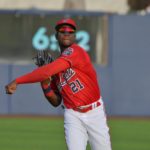
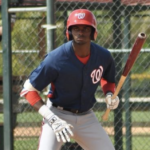
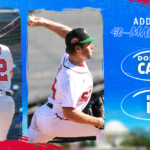
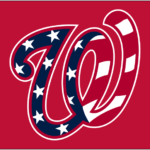
Nice work, thank you! What about Cristhian Vaquero (OF) ?
Thanks Emman! At the time of writing this Vaquero had not yet signed with the Nationals so he was omitted from the list. But if he had been with the organization he would probably be around 14.
Really enjoyed reading the article! What are you thoughts about Arol Vera?
Hey Mouse, thanks for reading! Vera has some pretty solid bat-to-ball skills, but I think the approach needs some refinement. I liked seeing the stolen bases as well. He should begin 2022 in Low-A so I’ll be looking to see if he makes some improvements.
I must have been really confused, as I JUST realized that I mistook Arol Vera with Armando Cruz or T.J. White and chose to ask you on the nationals prospects page. Really appreciate the reply, though, thank you!
Where is Jackson Tetreault?
Thanks for reading! I did not rank Jackson for a few reasons, mainly the lack of swing and miss. He spent most of his 2021 in Double-A and only struck out 18% of batters as a 25-year-old, with a 9.9% Swinging Strike rate. Plus his ERA estimators were close to 5.00.
Colin, It’s a good thing De Jon Watson does not think this way about Tetreault, as is evident in “The Athletic” Jan 7th article. I see that Tetreault was recently invited to West Palm Beach Jan 14-18th as well as 9 Pitchers to throw in front of pitching coaches like Jim Hickey, Sam Narron and others as well all the Development staff. From the names, it looks to be the Nats top tier Minor’s Pitchers for throw, greet and meet. Probably at the wishes of Watson, the new Development Coordinator to look at pitchers he has his eyes on before SST comes. Regarding your evaluation of Tetreault. I have been following Tetreault, Crowe, Troop, Romero, and others mostly from the 2017 draft and up. Tetreault did not throw to batters in the 2020 covid year and lost a bit more than half the 2021 season with an oblique injury suffered in the first week of SST. So he has not thrown two live hitters for 1.6 seasons. To judge him in a rehab year about “Swings and Misses” where he’s not in your top 50 and outperforming most of the organizations top 30 “Prospect” pitchers surprises me. Tetreault threw to a 3.74 era in AA, a 3.24 in AAA and clearly outperformed Nats #1 Pitching prospect Cavalli’s 7.30 era in AAA. That’s not to say that Tetreault is the better pitcher down the road and will be better than Cavalli, only time will tell. However, at that point in time, against the same AAA teams, one can’t deny, it’s a yes. Tetreault’s Pitch-ability out shined Cavalli’s 99 mph power and that’s a fact! The last 2 weeks of a rehab season, Tetreault, against a Boston WooSoox MLB loaded lineup, threw 5 shutout innings with 7 Ks, striking out 5 in a row, and against a New York’s RailRiders team threw 6 innings in the rain with 5 ks for a AAA 3.27 era. There are your “Swings and Misses”, and that’s in AAA where the ball flies and throwing a AAA ball pitchers never throw from AA down. Here’s an interesting stat for you in a 2019 Prospects Digest article regarding Tetreault as far as Swings and misses goes at 22 years old: “Between 2006 and 2016, only five 22 year-old pitchers posted a 24% to 26% strikeout percentage and a walk percentage between 6% and 8% in the South Atlantic League pitchers”. He has a career 3.80 era in 381.1 innings up to AAA. This is why I have a hard time with your evaluation of Tetreault. Pitchers like Tim Cate a #2 draft pick who is not even remotely competitive at the AA level is on your list as well as many others who have not performed over Tetreault. You’re saying that a swing and miss rate is more important than how many runs a Pitcher gives up, and that pitch-ability is less important. Maybe I’m missing something. I guess we will have to agree to disagree.
Colin. Sorry about the long winded reply, but wanted to present the case. love baseball, retired and bored I guess!